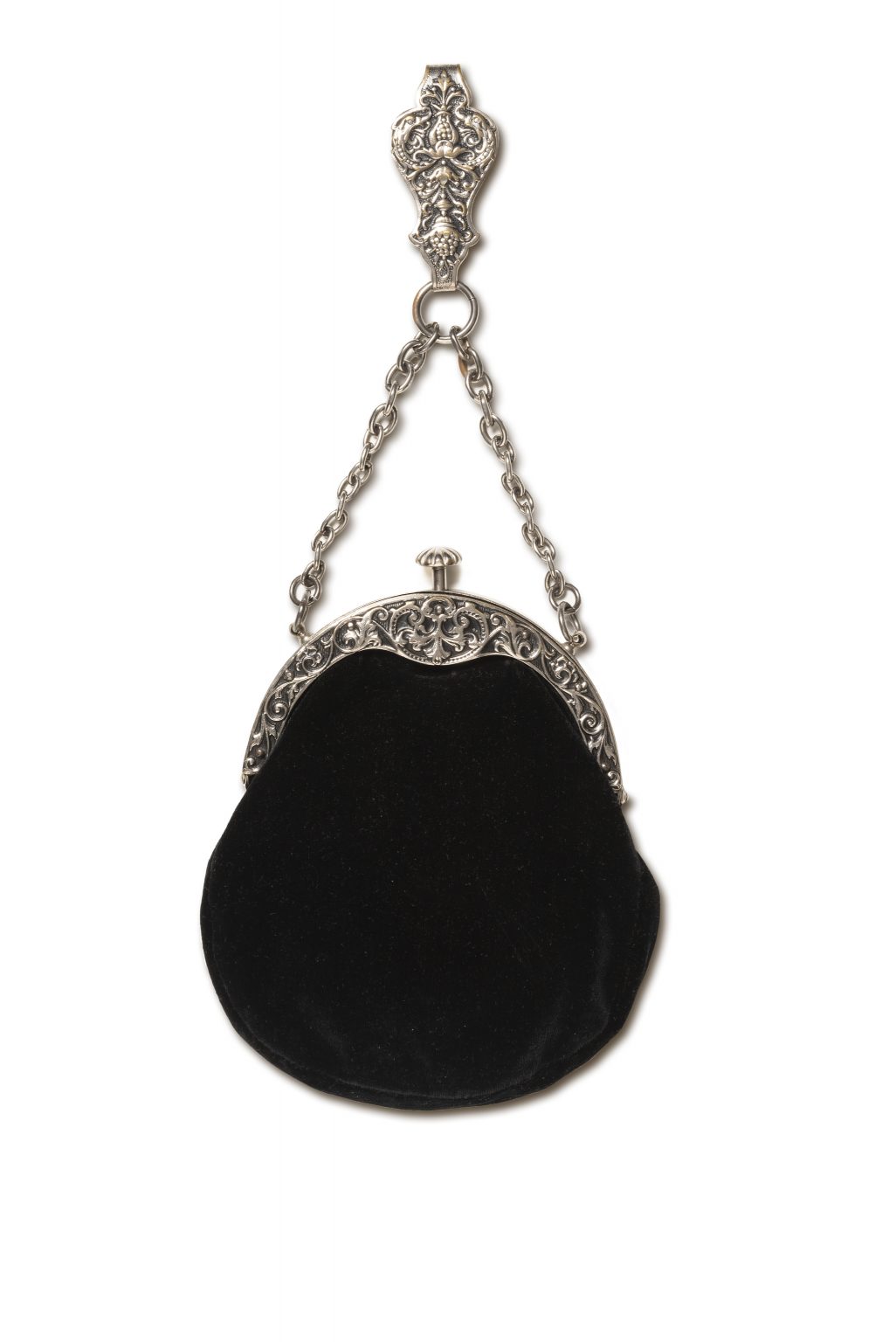
01 / 12
Chatelaine purse
Chatelaine purse made in black vegetable fibre velvet. The chain and fastening are in silver-plated metal, decorated with a floral motif, circa 1890- 1910, Chiara Sodini Collection.
Technical info
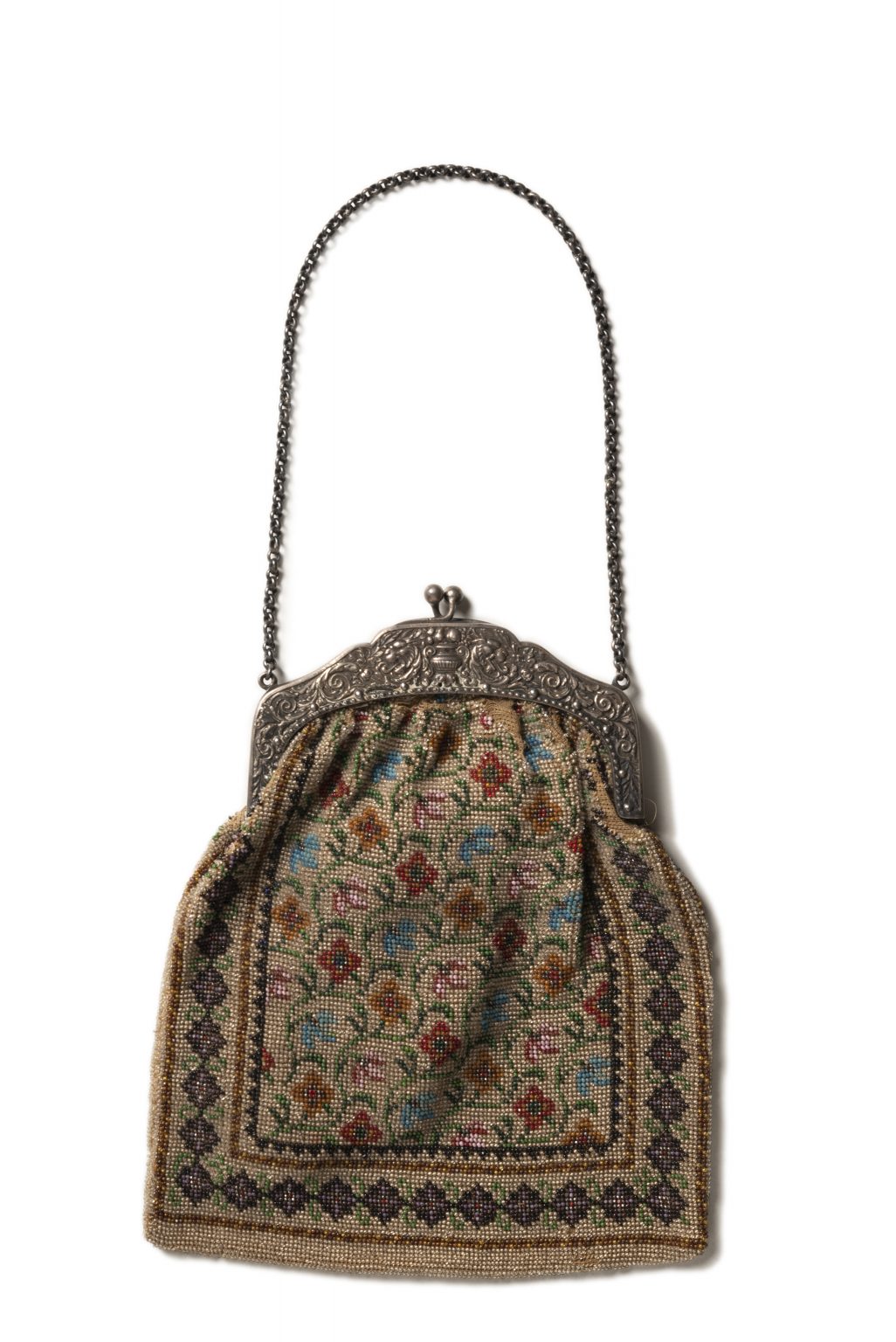
02 / 12
Bag
Cotton bag with metal clasp and beaded embroidery with a polychrome floral motif, silver chain handle.1920-1930 ca.Camilla Colombo Collection
Details
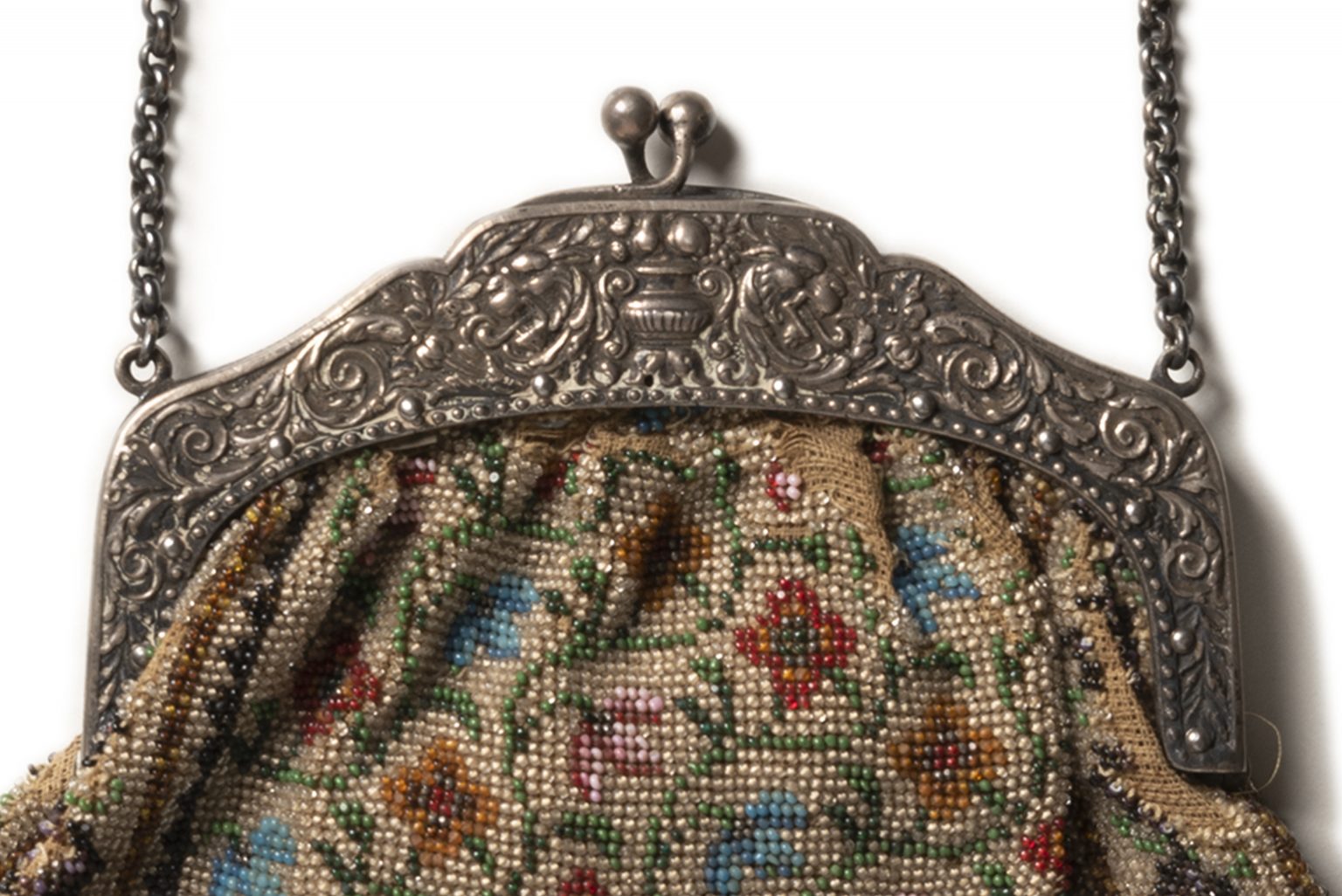
Technical info
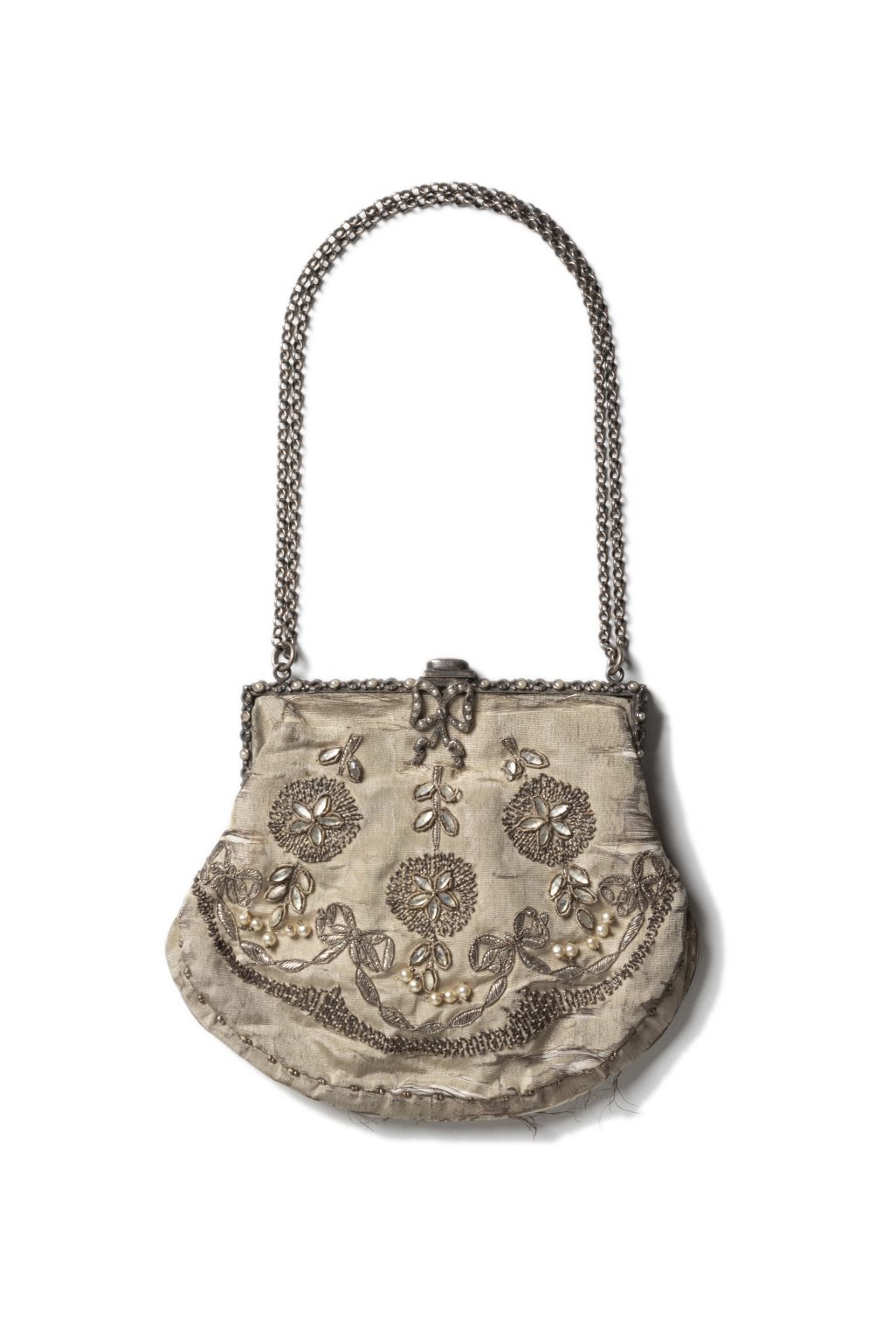
03 / 12
Evenig bag
Evening bag with ornate jewel clasp, metal and silk fabric embroidered with stylised flowers in curly silver thread, rhinestones, pearls and silver beads.
Double chain handle. Made in France for L. PENTLANDER, circa 1890 - 1910, Camilla Colombo Collection.
Details
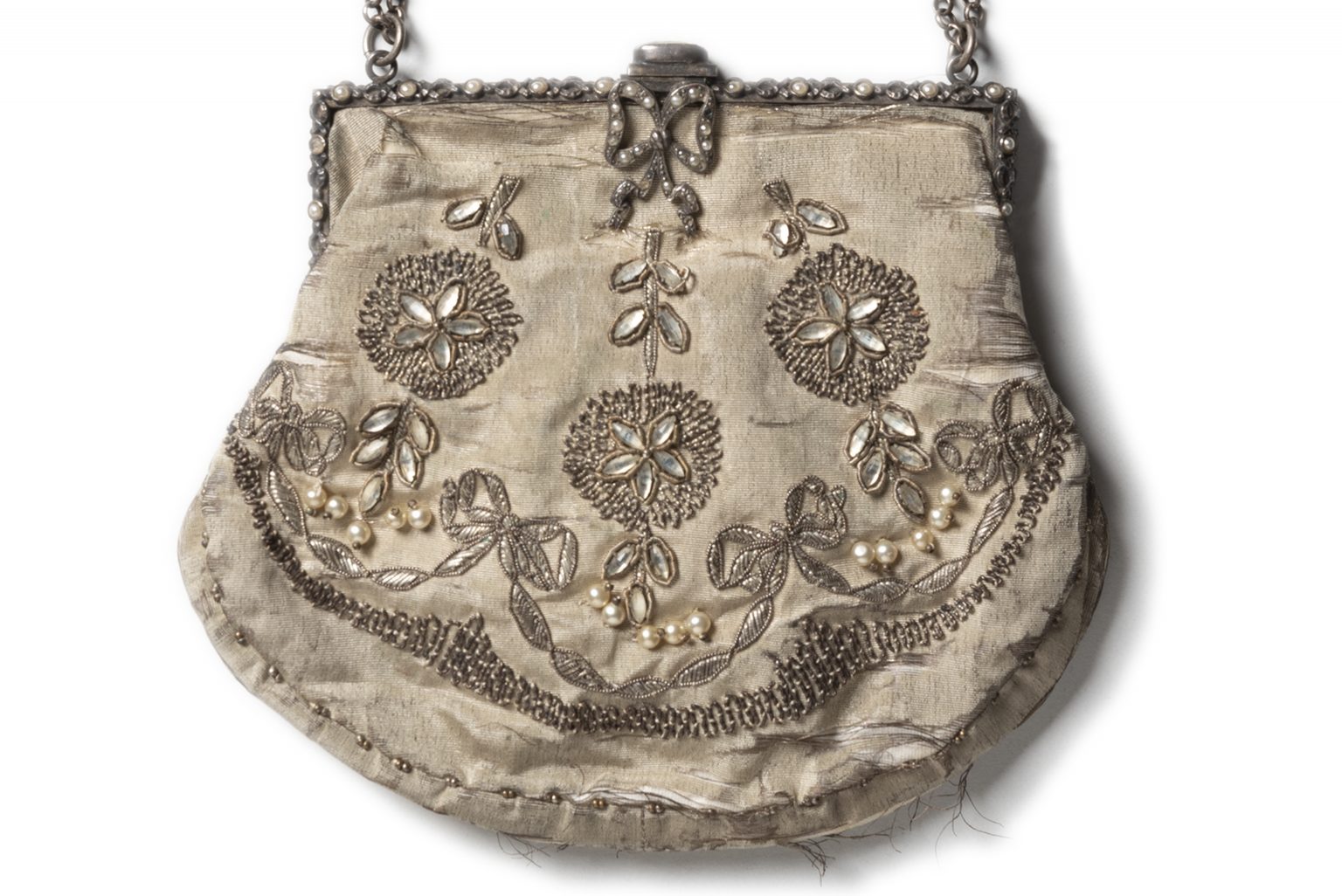
Technical info
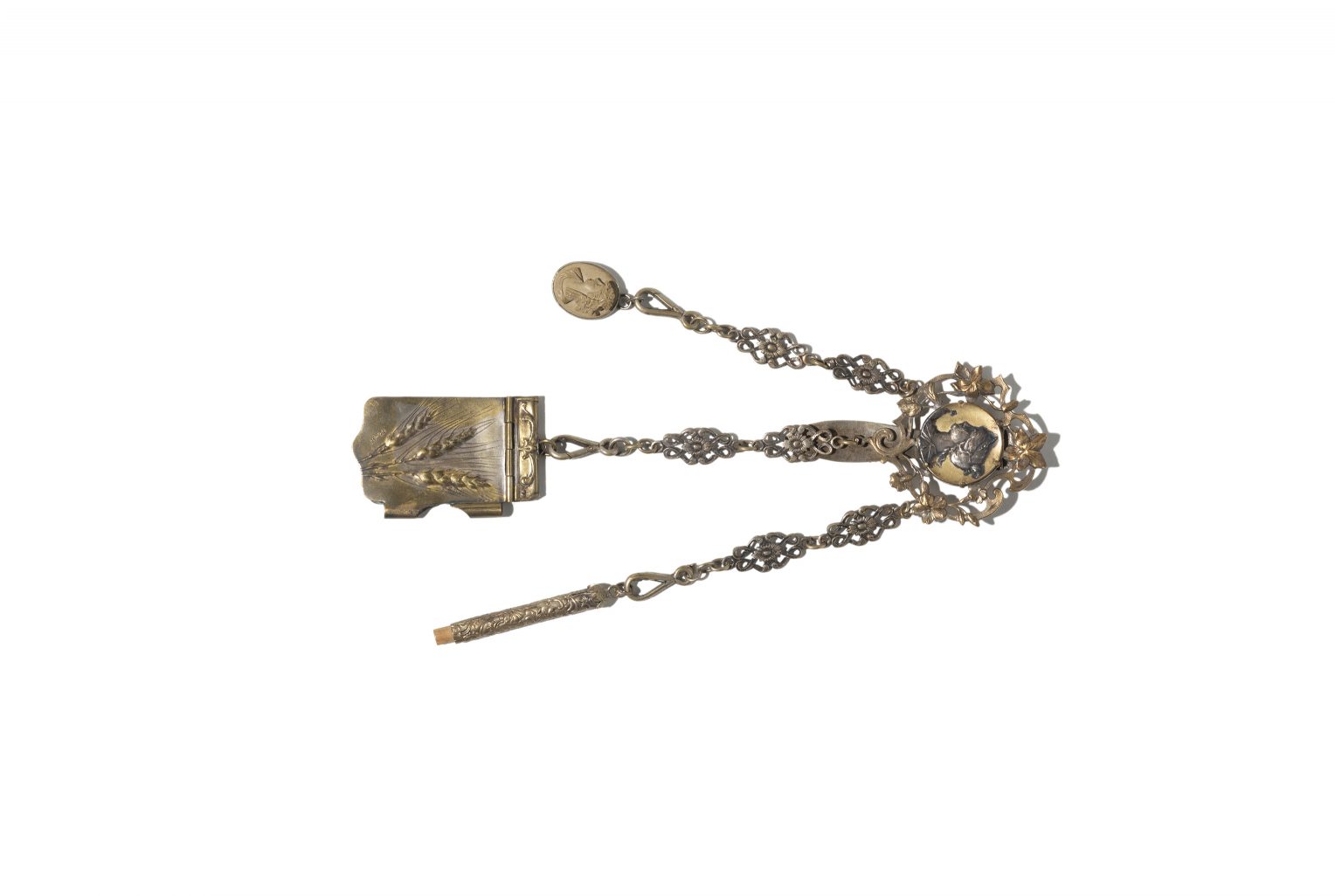
04 / 12
Dance chatelaine
Dance chatelaine in gold-plated metal alloy, late 19th–early 20th Century, Camilla Colombo Collection
Historical context
Châtelaine in French means the mistress of a chateau, but from the first decades of the 19th century the term was used to indicate a female accessory worn on a belt, to which small everyday objects were attached, because in the collective imagination of the 19th century the lady of the castle in the Middle Ages wore the keys to the manor hanging from her belt. The popularity of the châtelaine grew steadily throughout the century, reaching its peak between 1880 and 1910, before disappearing, finally replaced by handbags, with the outbreak of the Great War. There were different types of châtelaine designed for different purposes. There were small dance châtelaines, with smelling salts and dance cards attached, that did not swing too much while dancing and long, bulky sewing châtelaines hung with all sorts of tools from scissors to needle holders, from pincushions to tape measures, for use at home. The variations were endless and included fan holders, skirt clips and châtelaine bags. Alongside those made of precious materials such as silver or enamel, there were also simpler, functional models without decoration for the working classes, such as seamstresses, housekeepers or nurses.
Technical info
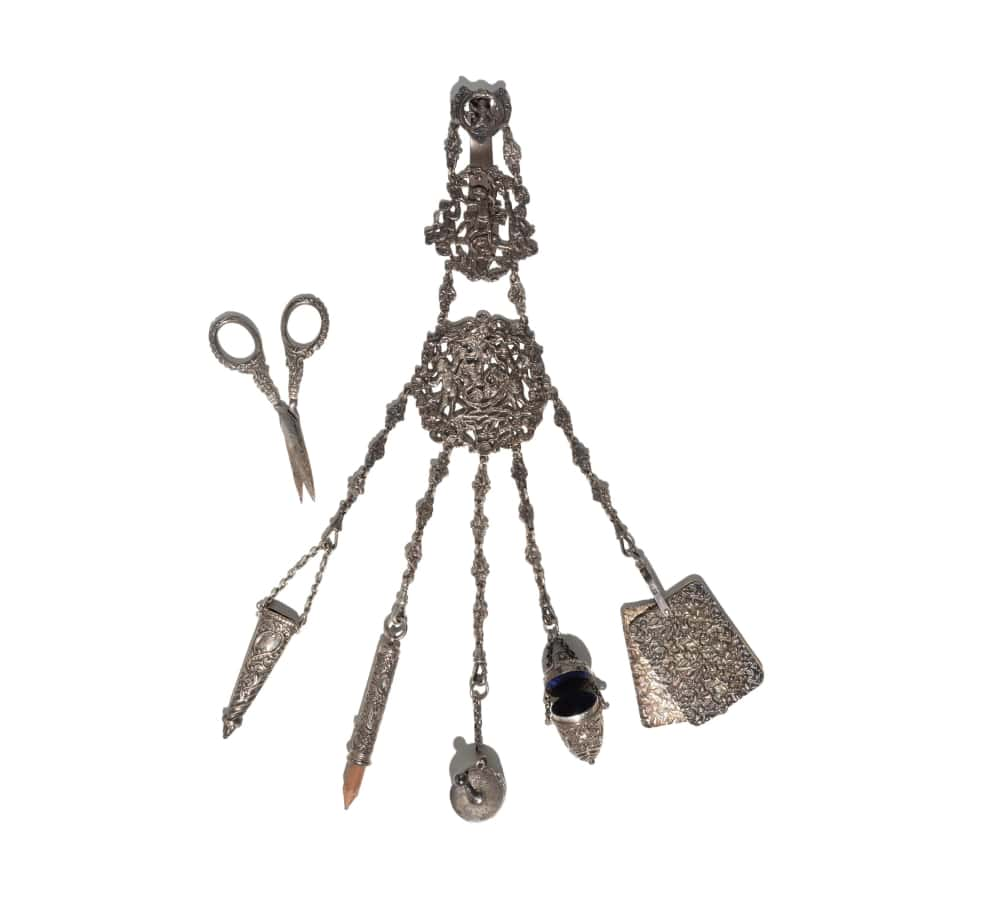
05 / 12
Sewing châtelaine
Sterling silver sewing chatelaine decorated with putti, England, late 19th–early 20th Century, Camilla Colombo Collection
Technical info
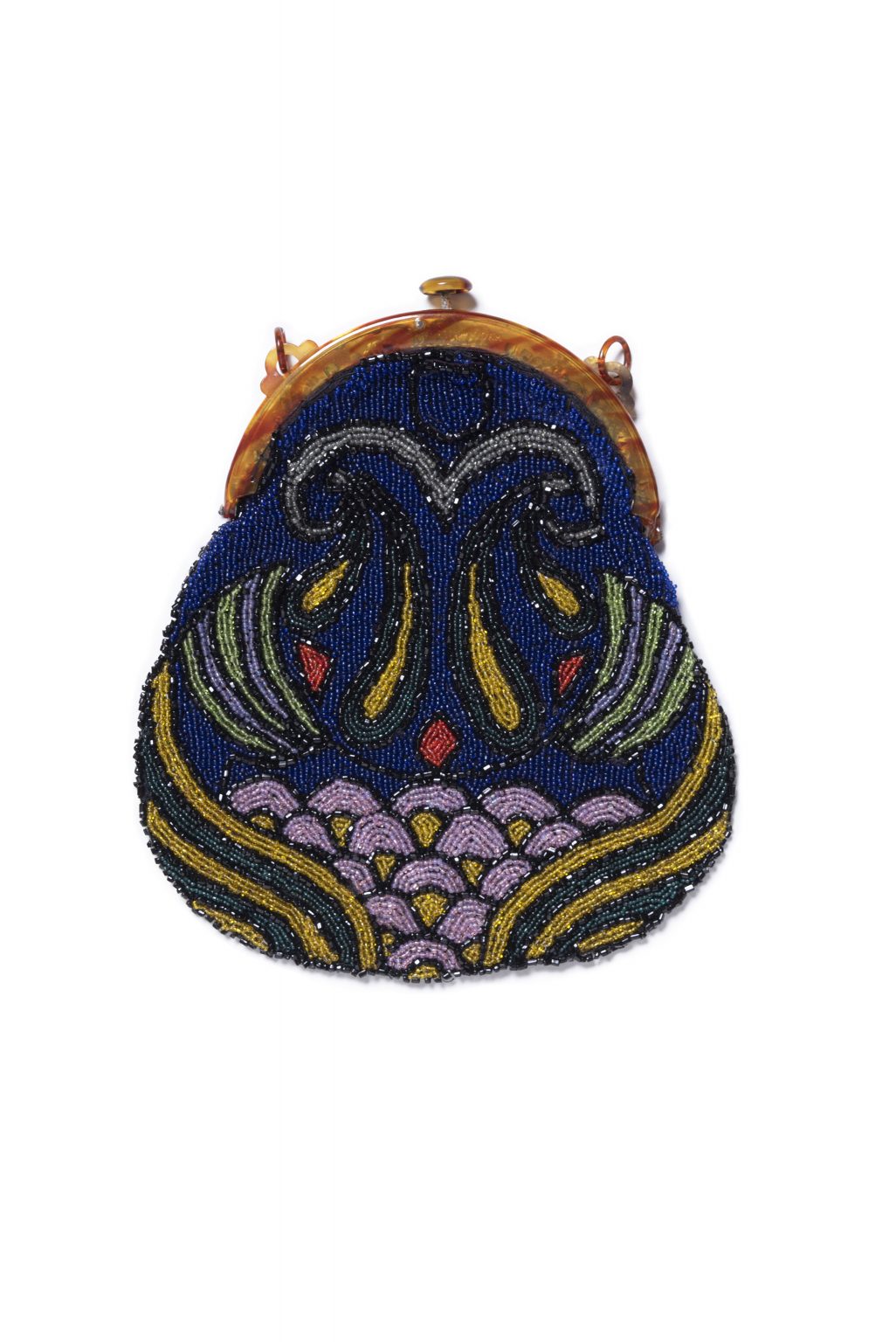
06 / 12
Evening purse
Evening purse with an abstract motif embroidered with the lunéville technique and multi-coloured beads, the press-button fastening is in celluloide, circa 1922-27, Chiara Sodini Collection.
Details
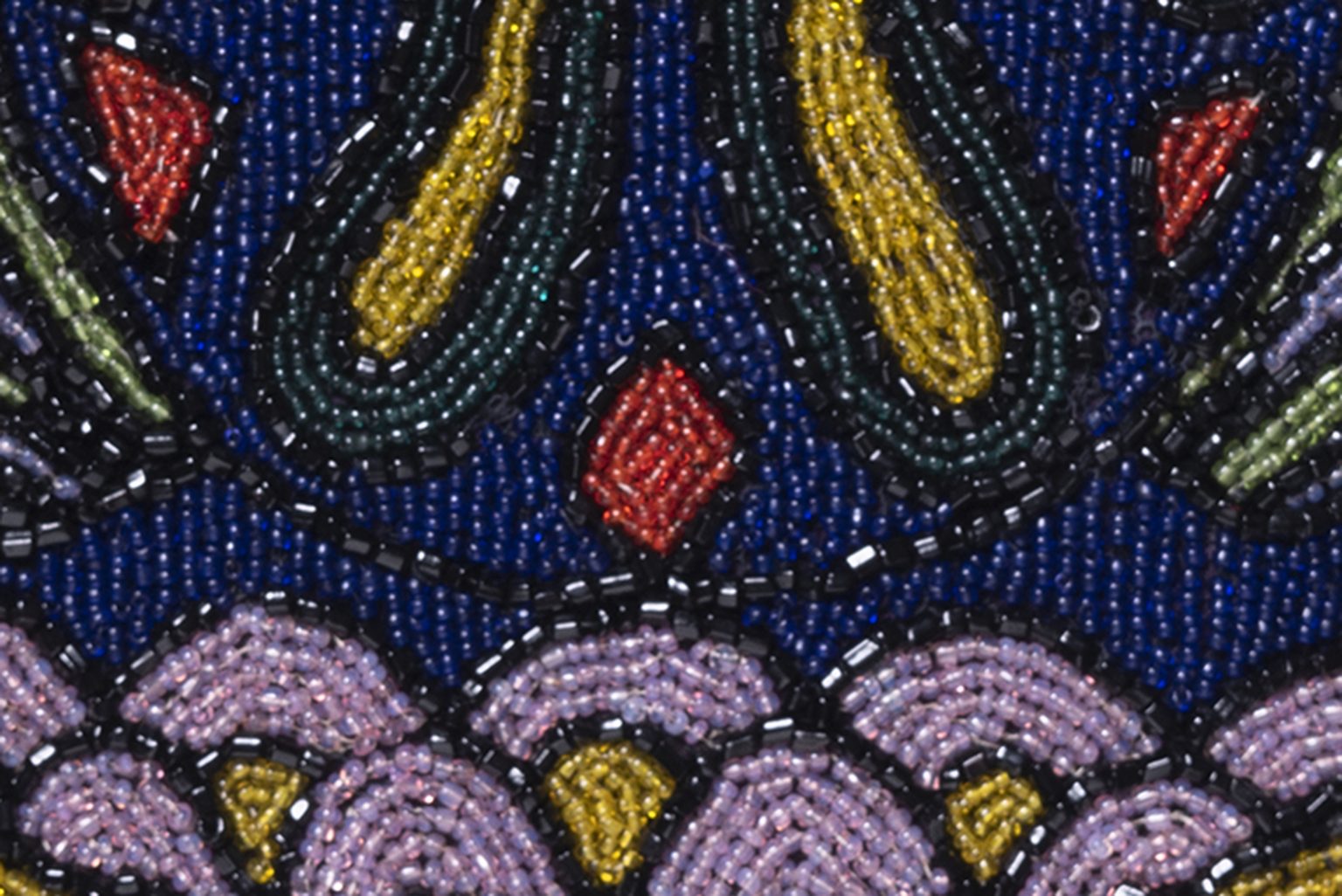
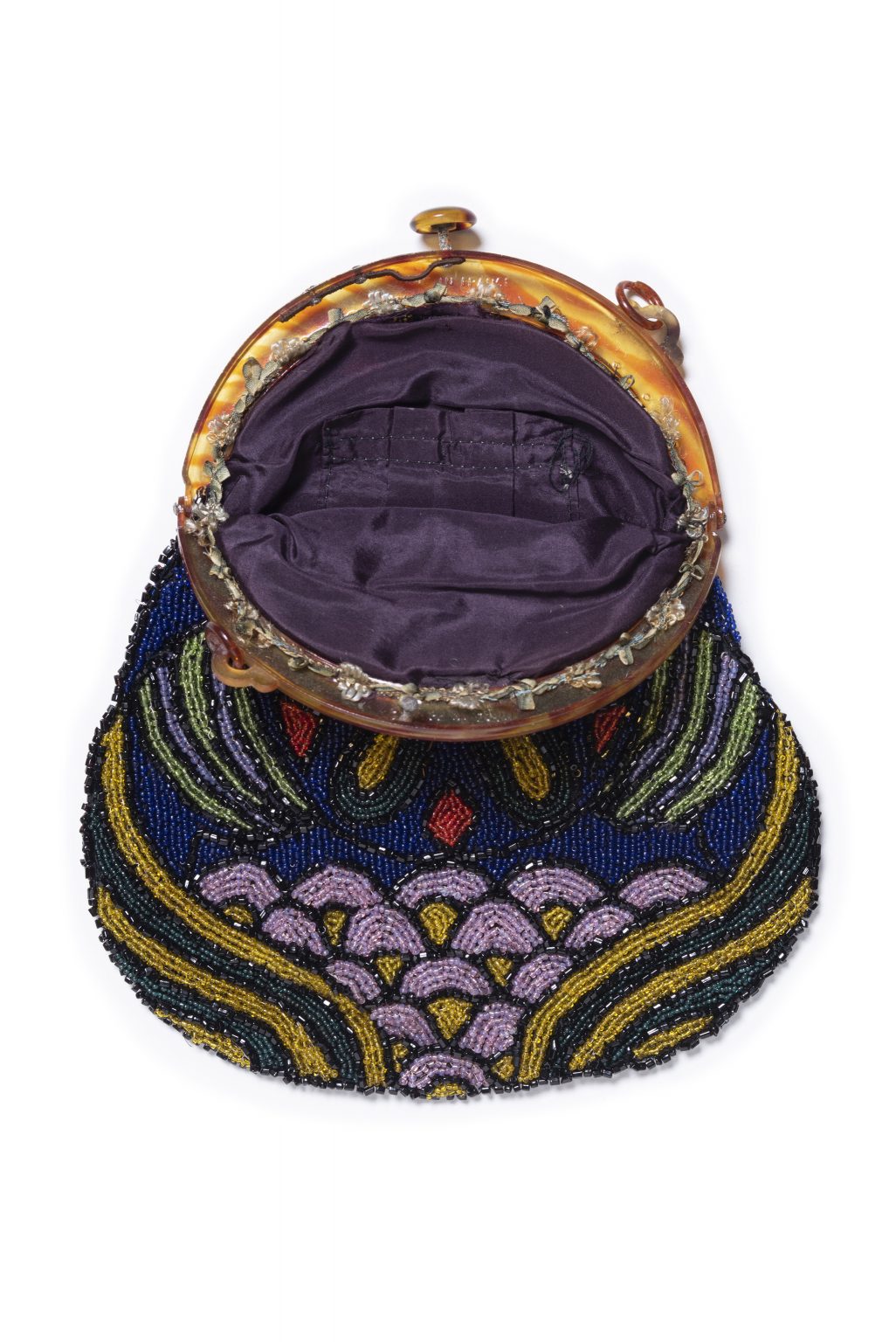
Technical info
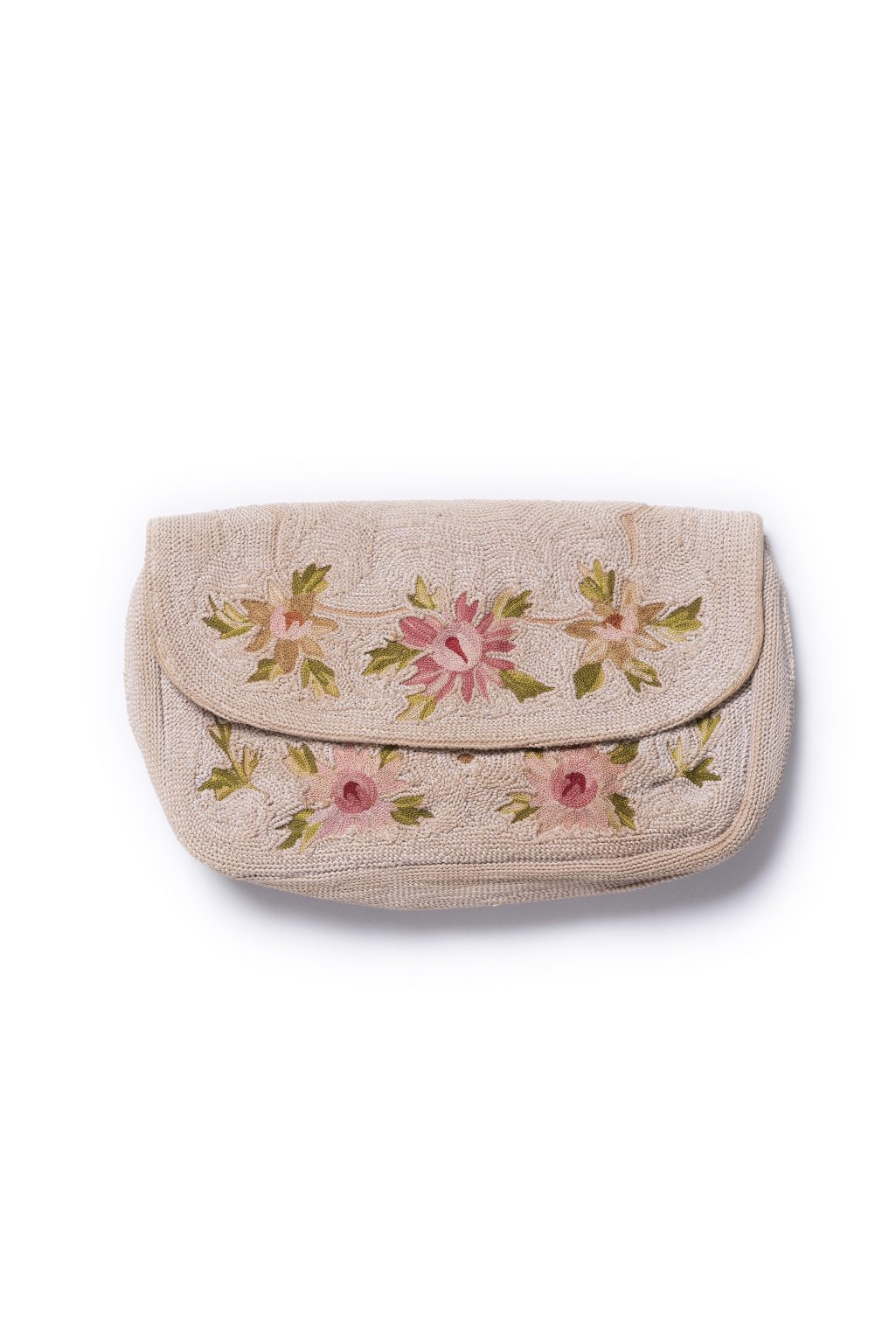
07 / 12
Clutch bag
Clutch bag with a luneville embroidered background and floral decoration in chain stitch, fastened with an automatic button, circa 1920-30, Chiara Sodini Collection
Technical info
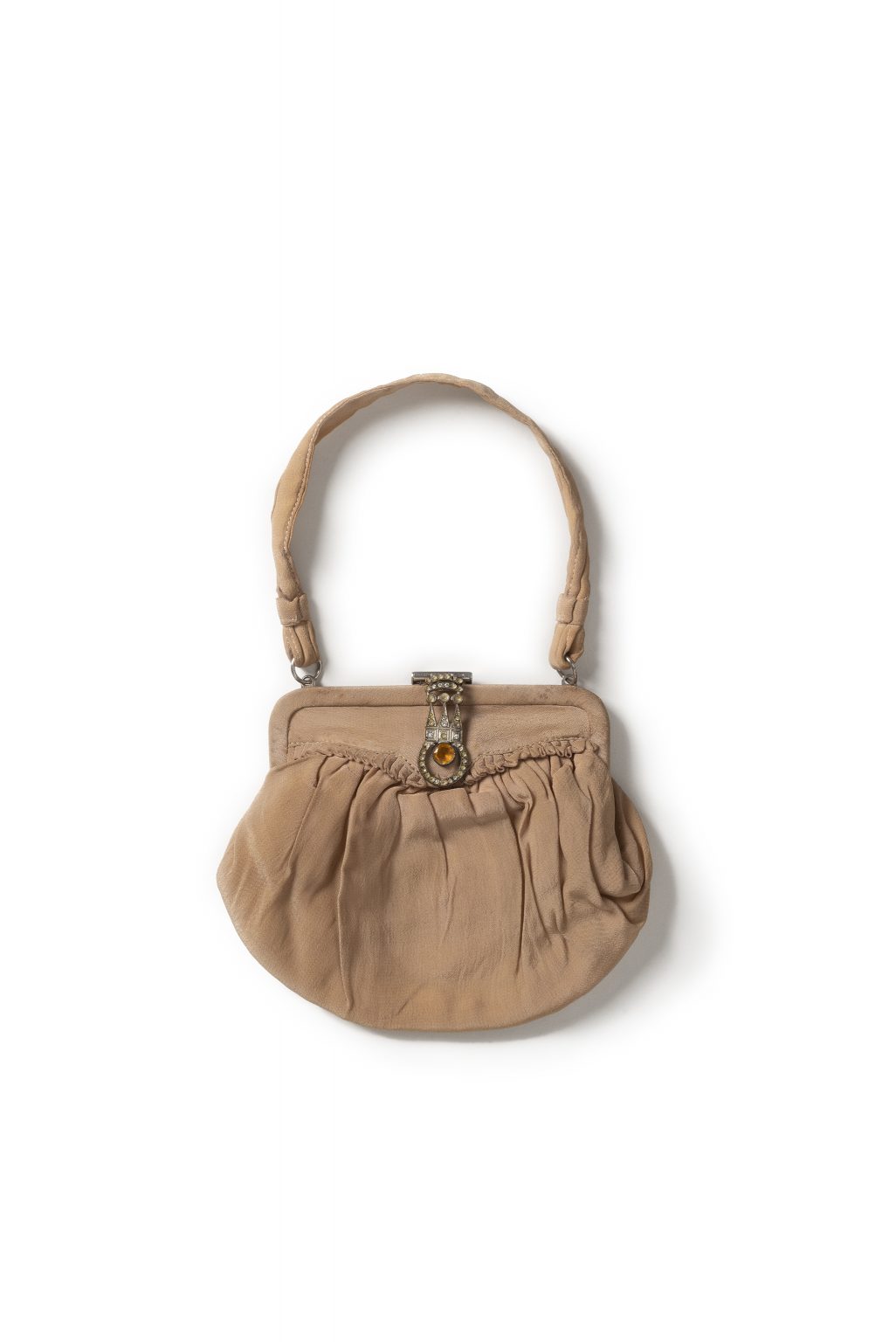
08 / 12
Evening bag
Tan-coloured silk evening bag with Art Decò-style rhinestone clasp, label CFR British Made, circa 1920-29, Chiara Sodini Collection
Technical info
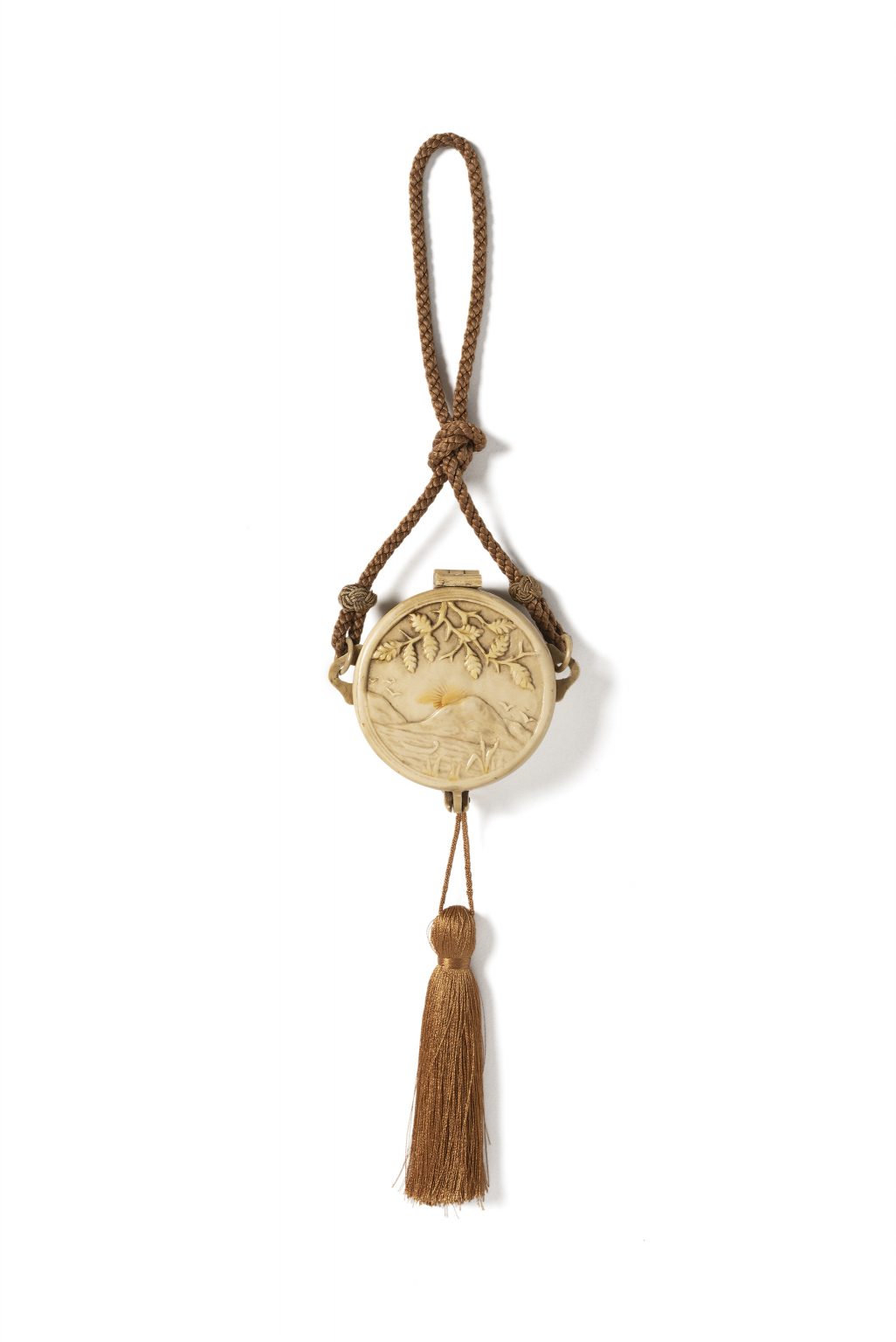
09 / 12
Minaudiére
Circular minaudiére in celluloid decorated with Japanese-style landscapes, cord handle and decorative silk tassel, circa 1920-29, Chiara Sodini collection
Details
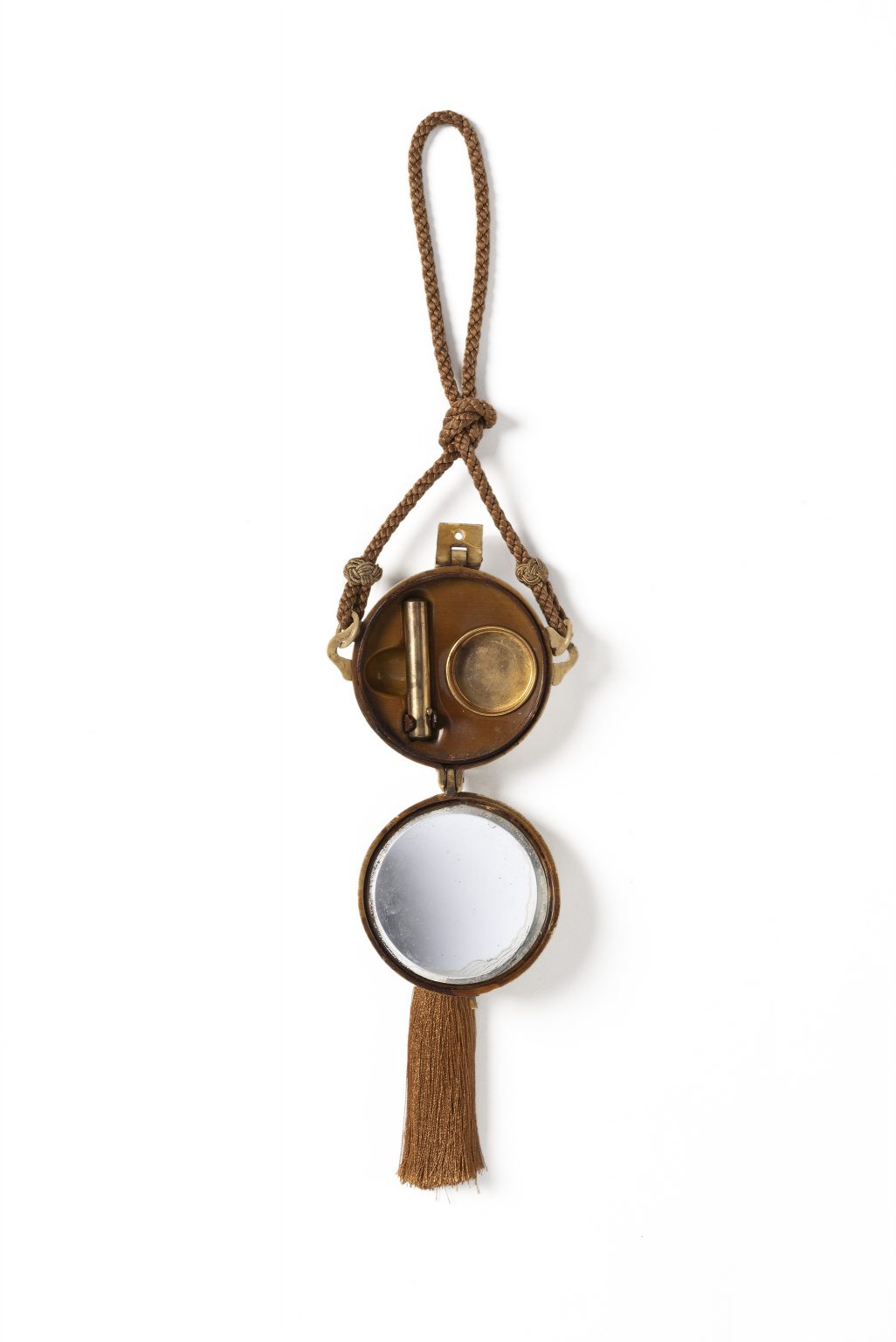
Technical info
Women
Helena Rubinstein and Estée Lauder
Chaja Rubinstein decided to abandon her medical studies. To escape an arranged marriage she changed her name to Helena and joined her aunt and uncle near Melbourne where she began working as a saleswoman for the family business. Customers were captivated by her European style and beautiful skin. Although she did not speak English very well, Helena gave advice to the customers, such as protecting their skin from the sun by using a hat and parasol. In 1902, the right to vote was extended to women in Australia. Australian women were allowed to work and earn money and therefore also had the luxury of being able to take care of their beauty. Helena sensed the change taking place and, in the same year, opened the first of her countless boutiques: Maison de Beauté Valaze. She then expanded to Sydney, London, Paris and New York. In her boutiques, she sells cosmetics created with her own hands. Her strength lies in her incessant scientific research and her ability to communicate. She was the first woman to set up a beauty institute, to classify skin types and to produce mascara tubes and lifting
creams.
American Estée Lauder followed in her footsteps and opened her own boutique in New York in 1930. Here she sold four beauty products using a technique called "Talk and Touch" and a sales strategy called "Gift with Purchase". The "Talk and Touch" technique consisted of promoting their cosmetics by applying them directly to customers' faces, the "Gift with Purchase" sales strategy, later copied by all competitors, involved giving out free samples. Rubinstein and Lauder, icons of female entrepreneurship, saw make-up as a tool for emancipation as women must also have the right to look after themselves.
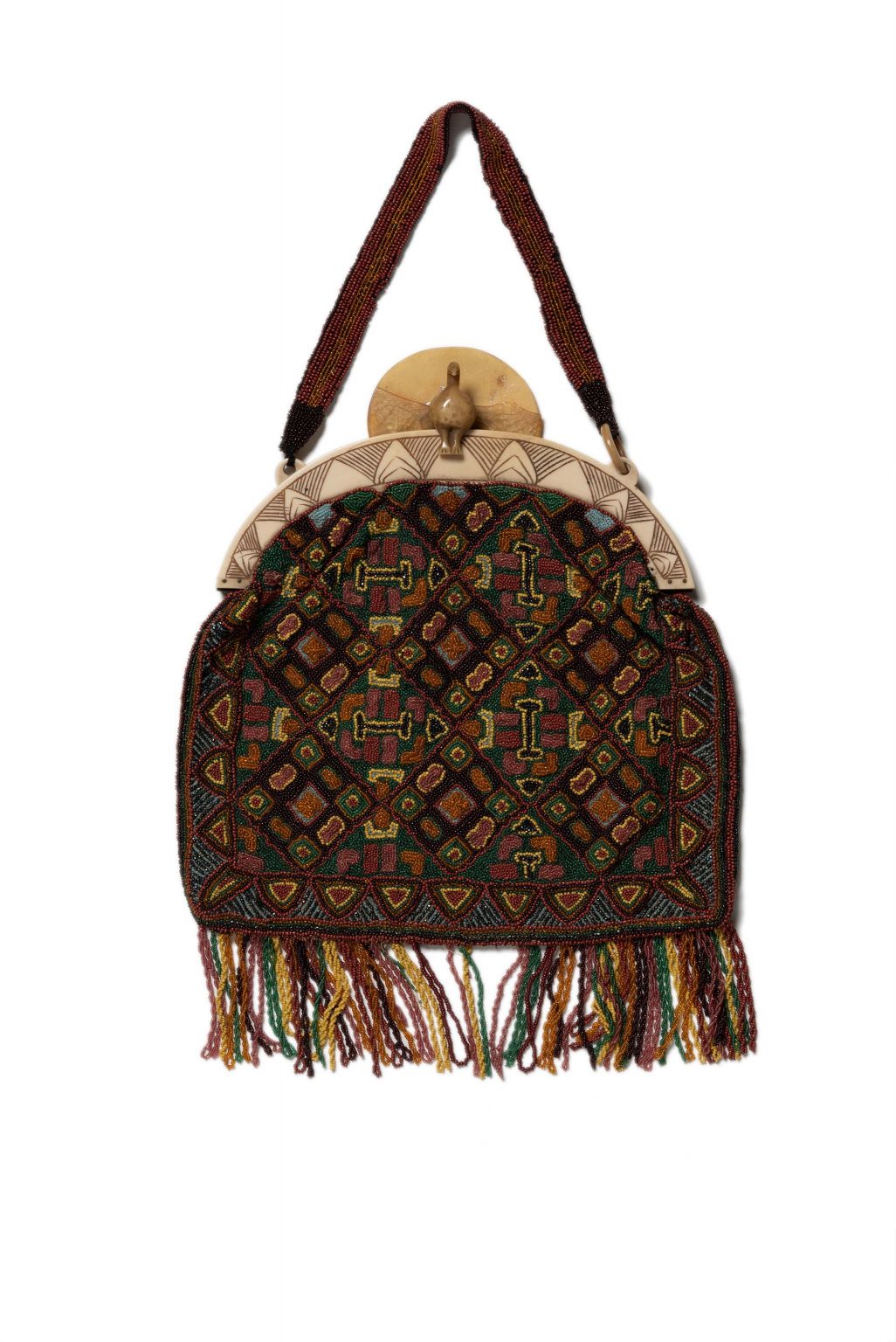
10 / 12
Bag
Vegetable fibre bag with African motifs embroidered with colored glass beads, fastening in bakelite, circa 1922- 1930, Chiara Sodini Collection
Technical info
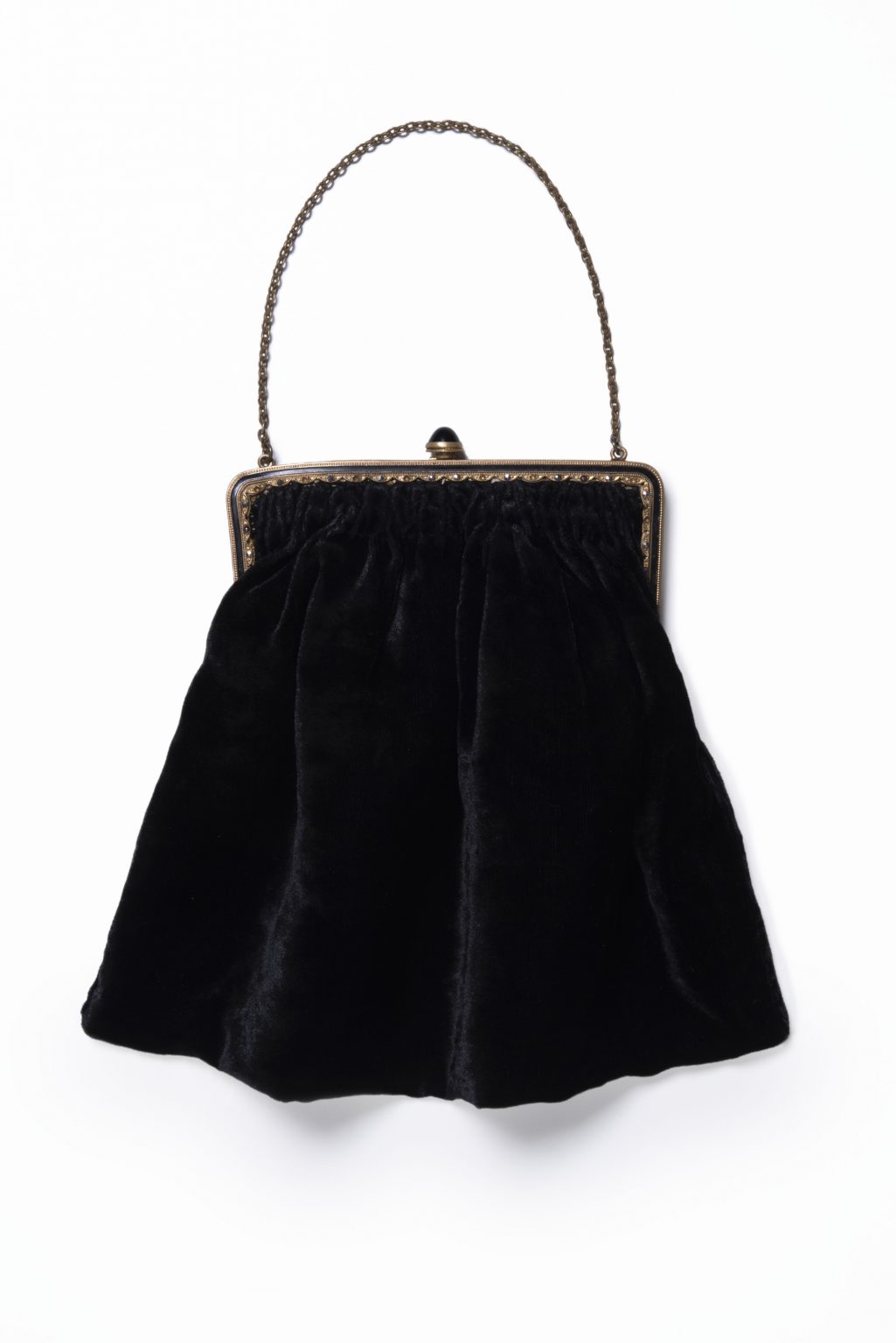
11 / 12
Pouch bag
Pouch bag in black silk velvet with chain and snap closure, circa 1920 - 1930, Chiara Sodini Collection
Details
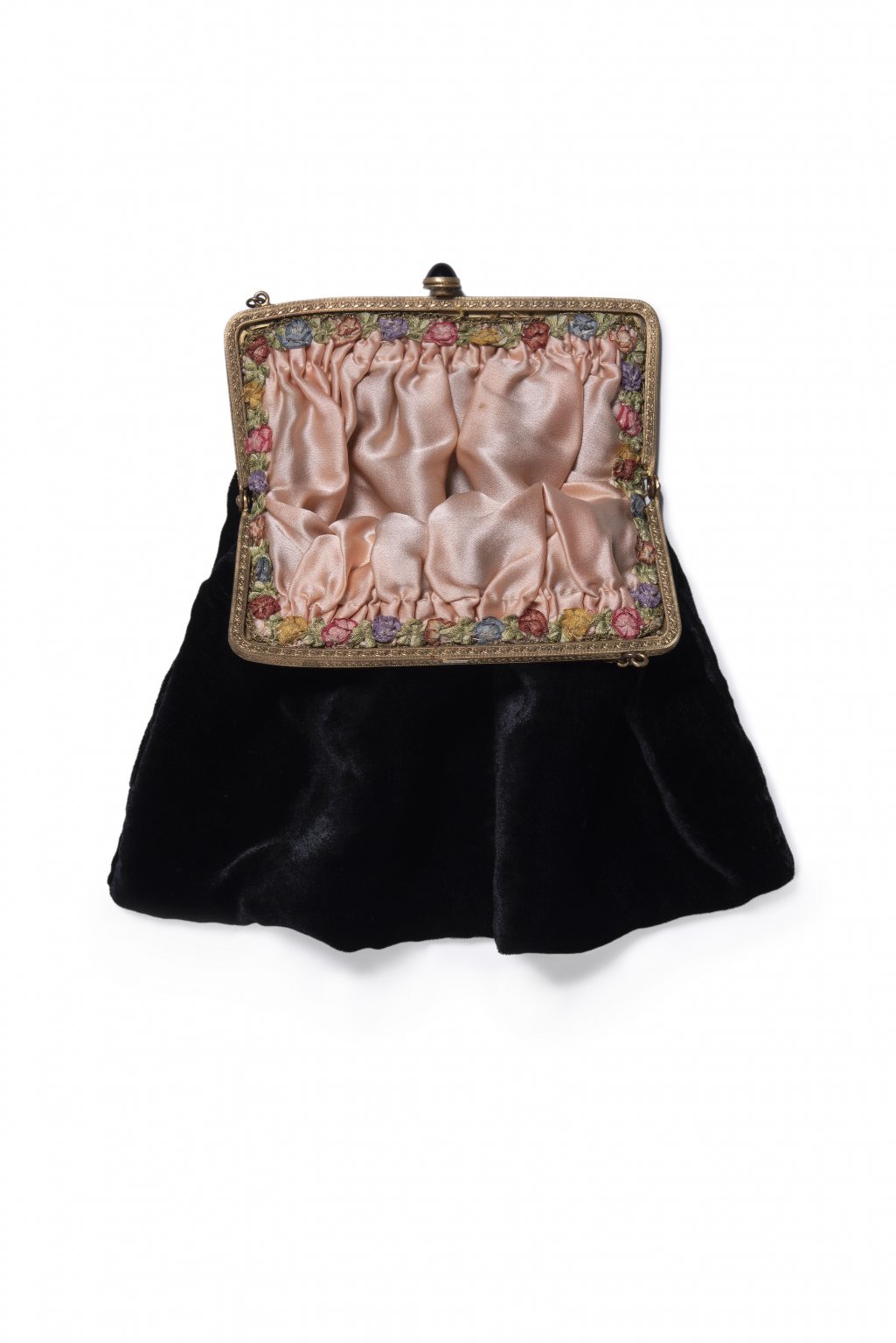
Technical info
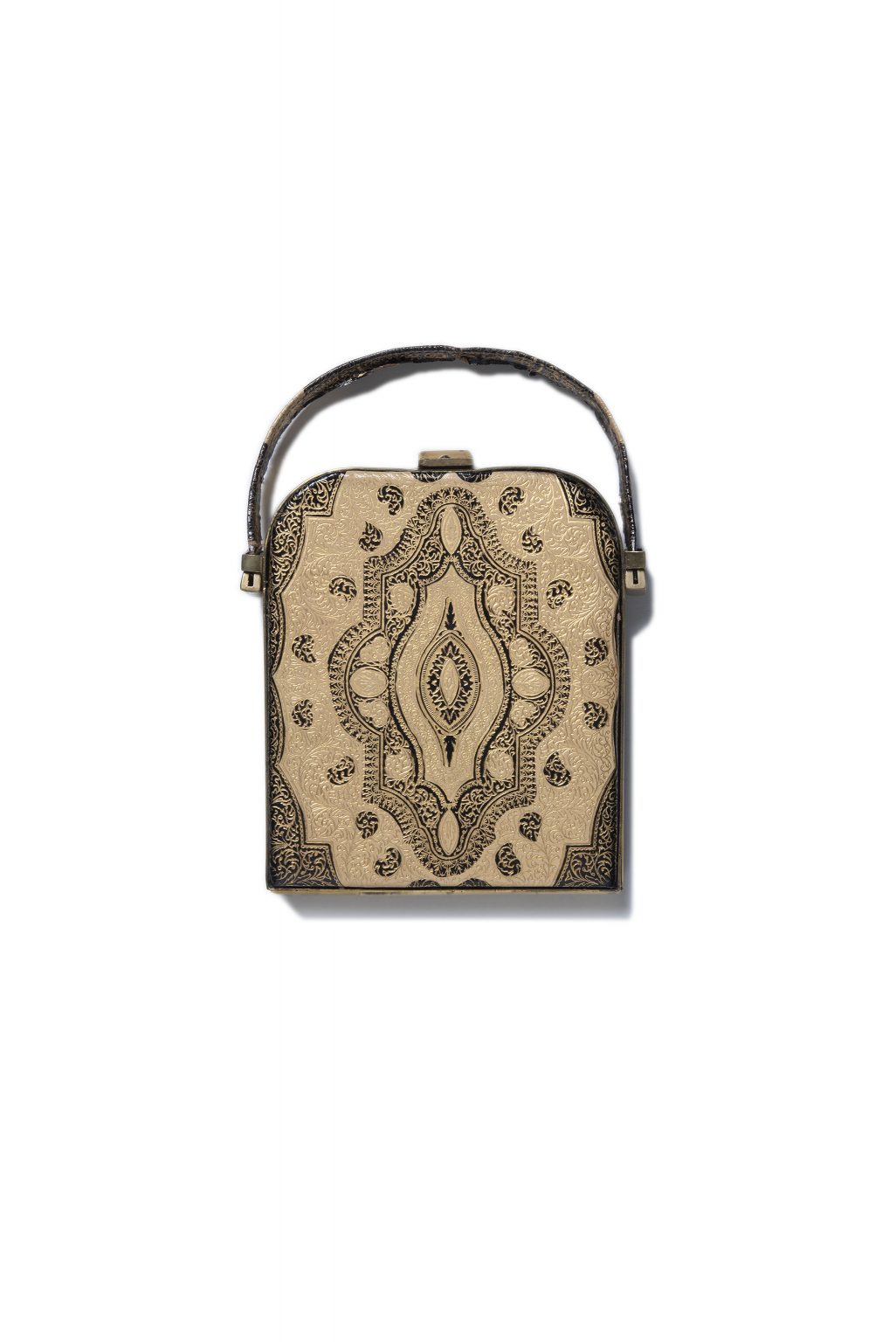
12 / 12
Minaudiére
Cream and black colored leather minaudiére with gilded decoration, France, circa 1920-25, Chiara Sodini Collection.
Details

Technical info
Women
Women and make-up
The bourgeois woman of the 1900s built her charm on the glorification of an artificial image. Her day was punctuated by social events with precise dress codes and hours spent dressing up in the boudoir, spraying her body with essences and perfumes. Make-up was for the young and the old, for the high- class and middle-class woman, but it was not yet widely accepted. The perfection of a white and smooth skin with slightly reddened cheeks is therefore sought through cosmetics that must be as natural and imperceptible as possible. Only showgirls resorted to overt make-up, so much so that they became testimonials for the first beauty salons and cosmetic houses, such as Elizabeth Arden and L’Oreal, that sprang up in Paris in the first decade of the century. Thanks to silent films, the 1920s mark an epoch-making change in make-up aesthetics. The absence of sound made the face the protagonist, the interpreter of emotions and feelings. Actresses began to make up their eyes in dark tones, and to draw their lips into a heart shape with purple or burgundy lipsticks. The face, white as that of a porcelain doll, was drawn with very thin eyebrows. In trying to embody these ideals of beauty, wearing make-up was not only socially acceptable it was necessary in order to be fashionable. The very act of touching up make-up in public became an elegant, seductive gesture, and cosmetics became a regular addition to women’s handbags.